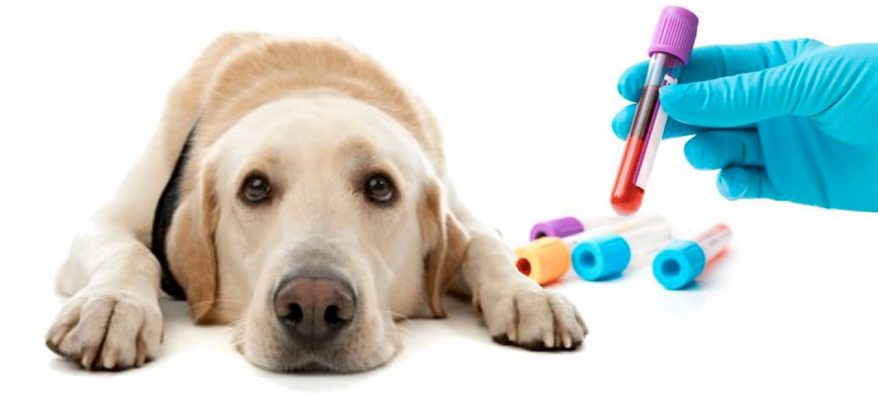Opportunities to improve the efficiency of diagnosis in veterinary medicine
Materials and methods. The paper summarizes the experience of the application in veterinary practice 17 Digital X-ray systems, as well as the results of the introduction into clinical practice of Ukraine's first virtual desktop radiologist consultant. It should be noted, we are talking about is digital radiography systems, which, unlike X-ray computer systems convert x-ray image into a visible within a few seconds without the use of intermediate members (eg, plates with the storage phosphor).
Discussion. Radiological studies are one of the main diagnostic methods in medicine., and in veterinary medicine. Only with the use of X-ray diagnostics in medicine is about 70% diagnoses, despite the increasing use of other methods of radiation diagnostics: ultrasound scanning, computed and magnetic resonance imaging, scintigraphy, etc.. P. In veterinary medicine, this ratio can be even higher due to the lack of expensive high-tech equipment..
However, to date, X-ray diagnostics has not found wide application in veterinary clinics.The main reasons for this are the high cost of X-ray equipment., the actual absence of radiologists and x-ray laboratory assistants in veterinary clinics, the complexity and duration of the process of obtaining a high-quality X-ray using traditional film technology. As a consequence, veterinarians often refer patients for x-rays to medical facilities., what is a violation of sanitary standards. And in the presence of an X-ray apparatus, it is used only in cases of extreme necessity because of the fear of losing precious working time due to obtaining a low-quality picture.. With film imaging technology, veterinary X-ray diagnostics is an art, accessible to few. The situation changes radically with the transition to digital technology for imaging X-ray images.. The use of digital technology for visualization of X-ray images has eliminated the main obstacles to the widespread use of X-ray diagnostics in veterinary medicine:
- there is no longer a need for the use of a harmful and rather laborious photochemical process; accordingly, the requirements for the X-ray diagnostic room have been simplified;
- digital radiography has become the fastest diagnostic method in veterinary medicine: a digital X-ray image is available to the doctor for analysis on the monitor screen after 10-15 seconds after exposure; at the same time, the likelihood of a technological defect is minimized;
- reduced radiation exposure to patients and staff; - operating costs are minimized; X-ray images are analyzed electronically on a monitor screen and stored in an electronic archive (the cost of storing an annual archive of X-ray images does not currently exceed 3-4 US dollars);
- diagnostic information can be transmitted to the client in the form of a printout of a digital X-ray image on photographic paper using an inkjet printer, in the form of electronic recording on CD- or DVD- disk, and also in the form of an access code for an X-ray image on the Internet. Electronic transmission of X-ray images allows them to be reproduced on the monitor of any computer, having the appropriate software, anywhere in the world. The use of the Internet makes it possible to separate in time and space the locations of research and descriptions of images, making remote consultation and description of digital X-ray images a reality. In other words, if the veterinary clinic currently has a digital X-ray machine, but there is no radiologist, then she can conclude an agreement with any specialist in veterinary X-ray diagnostics and use his services, transferring pictures to him via the Internet for description. In this way, the main goal of the X-ray examination is achieved - the correct diagnosis. If there are several digital rentals in the network of veterinary clinics, then by creating a virtual workstation for the radiologist, you can concentrate the description of all images in one place and create a single electronic database with access to it for clinicians. In the presence of digital X-ray equipment in the veterinary clinic, the frequency of using X-ray diagnostics in the treatment and diagnostic process increases significantly, which contributes to its quick payback. This is evidenced by the data, given in the table.
table
Two X-ray imaging technologies - two strategies for veterinary X-ray imaging
Main technical, economic and operational indicators
X-ray imaging technology
film digital
1. Cost of equipment and necessary accessories
10.0 thousand. dollars 40.0 thousand. dollars
2. Time to obtain a ready-for-analysis diagnostic image
10 minutes 15 seconds
3. The likelihood of a technological defect
To 20% (to 50%) To 2% (to 5%)
4. Average annual cost of consumables
About 120 dollars Less 120 dollars
5. Average number of studies per year.
240…360 2400…3600
6. Income from X-ray examinations (at the cost of one study - 10.0 dollars)
2400... 3600 dollars 24000 ... 36000 dollars
X-ray diagnostic strategy
Cost minimization
Receiving a profit
conclusions. The use of digital technology for visualization of X-ray images and teleradiology makes it possible to increase the efficiency of the treatment and diagnostic process by reducing the diagnostic time, improving the quality of diagnostic information and the possibility of attracting highly qualified specialists for the analysis of the latter, at their workplaces in various veterinary and medical clinics. From an art, X-ray diagnostics turns into a routine procedure, accessible to many, which is the basis for the widespread introduction of digital X-ray diagnostics in veterinary practice.
Summary Kovalenko Y.N., Miroshnichenko S.I.: The capabilities of the diagnostic efficiency increasing in the veterinary. The Center of X-Ray Technologies of Association of the Radiologists of Ukraine, Kiev, Ukraine Showed the benefits of the digital X-ray imaging technology. Justified wide implementation of X-ray diagnostic in veterinary hospitals on basis of the digital X-ray imaging technology using.


ну и морда